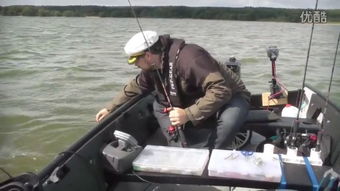Content:
Winter fishing can be a serene and rewarding experience, offering anglers the chance to connect with nature in a tranquil setting. However, the cold weather brings its own set of challenges, particularly when it comes to finding the perfect spot to cast your line. One of the most crucial skills in winter fishing is learning how to find the bottom effectively. Here's a comprehensive guide to mastering this essential technique.
Understanding the Winter Bottom
In the colder months, fish tend to move to deeper waters where the temperature is more stable. This means that finding the bottom in winter is not just about locating the physical bottom of the lake or river but also understanding the patterns of fish movement during the winter months.
Study the Area
Before you head out, do some research on the area you plan to fish. Look for maps or ask local anglers about known depths and underwater structures. Understanding the layout of the body of water you're fishing can give you a head start in finding the bottom.
Use a Depth Finder
A depth finder is an invaluable tool for winter fishing. It allows you to monitor the depth of the water and identify underwater features. Make sure your depth finder is functioning properly and set it to the correct water temperature to get accurate readings.
Start at the Shallows
Begin by casting your line into the shallowest parts of the water. This will help you get a sense of the bottom composition and its changes. Pay attention to how the line feels as it hits the bottom and how quickly it sinks. A heavier line might sink faster in colder water, so adjust accordingly.
Move Outward Gradually
Once you have a feel for the bottom in the shallows, start moving outward in increments. Cast further and further from the shore, noting the changes in the feel of the line as it hits the bottom. This will help you identify the transition from shallow to deeper waters.
Look for Structure
Fish often congregate around underwater structures such as rocks, logs, or vegetation. These areas can be prime spots for winter fishing. Use your depth finder to locate these structures and note their depths.
Adjust Your Bait and Lure
In winter, fish are less active, so your bait or lure needs to be more subtle. Use lighter tackle and baits that mimic natural prey. If you're using lures, opt for slower, more erratic movements that mimic the struggling of a struggling fish.
Be Patient
Finding the bottom in winter can take time. Fish may be less active, and the water may be murky due to ice or algae. Be patient and take your time to explore different areas. Sometimes, the best spots are those that are overlooked by other anglers.
Use a Feeder or Lead Weight
A feeder or lead weight can help you feel the bottom more effectively. Attach it to your line and cast it out. As it hits the bottom, you'll feel a resistance. Move the weight around to feel for different types of terrain, such as sand, gravel, or rock.

Check the Weather
Before heading out, check the weather forecast. Strong winds can make it difficult to cast and feel the bottom. Choose calm days with minimal wind for the best results.
Stay Warm and Comfortable
Lastly, remember that comfort is key to a successful winter fishing trip. Dress in layers, wear a waterproof jacket, and keep your extremities warm. A good pair of boots and gloves are essential for maintaining dexterity and preventing hypothermia.
In conclusion, mastering the art of finding the bottom in winter fishing requires patience, preparation, and the right tools. By understanding the behavior of fish in cold water, using the right equipment, and being patient, you can increase your chances of a successful outing. So, bundle up, hit the water, and enjoy the quiet beauty of winter fishing.












